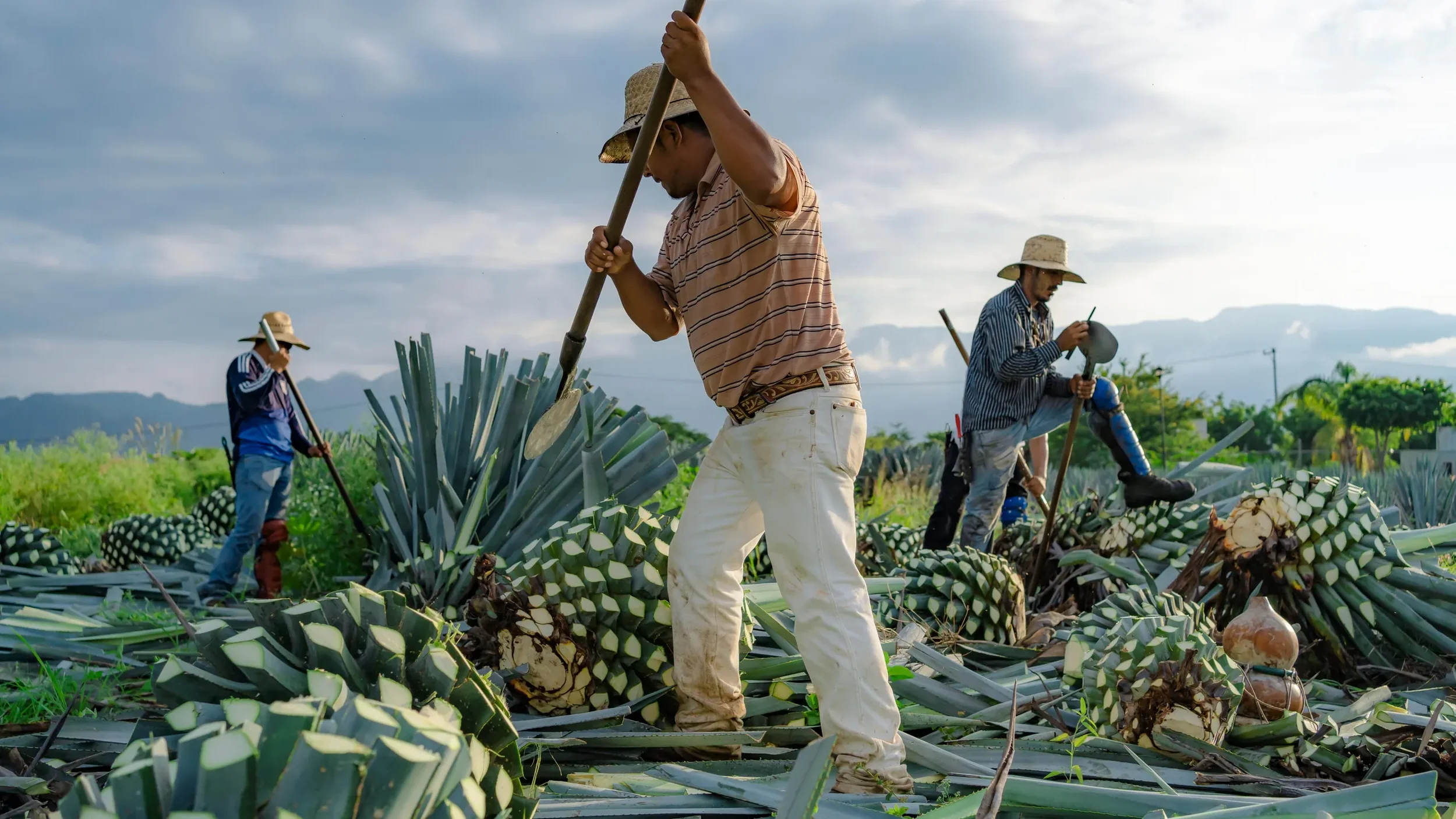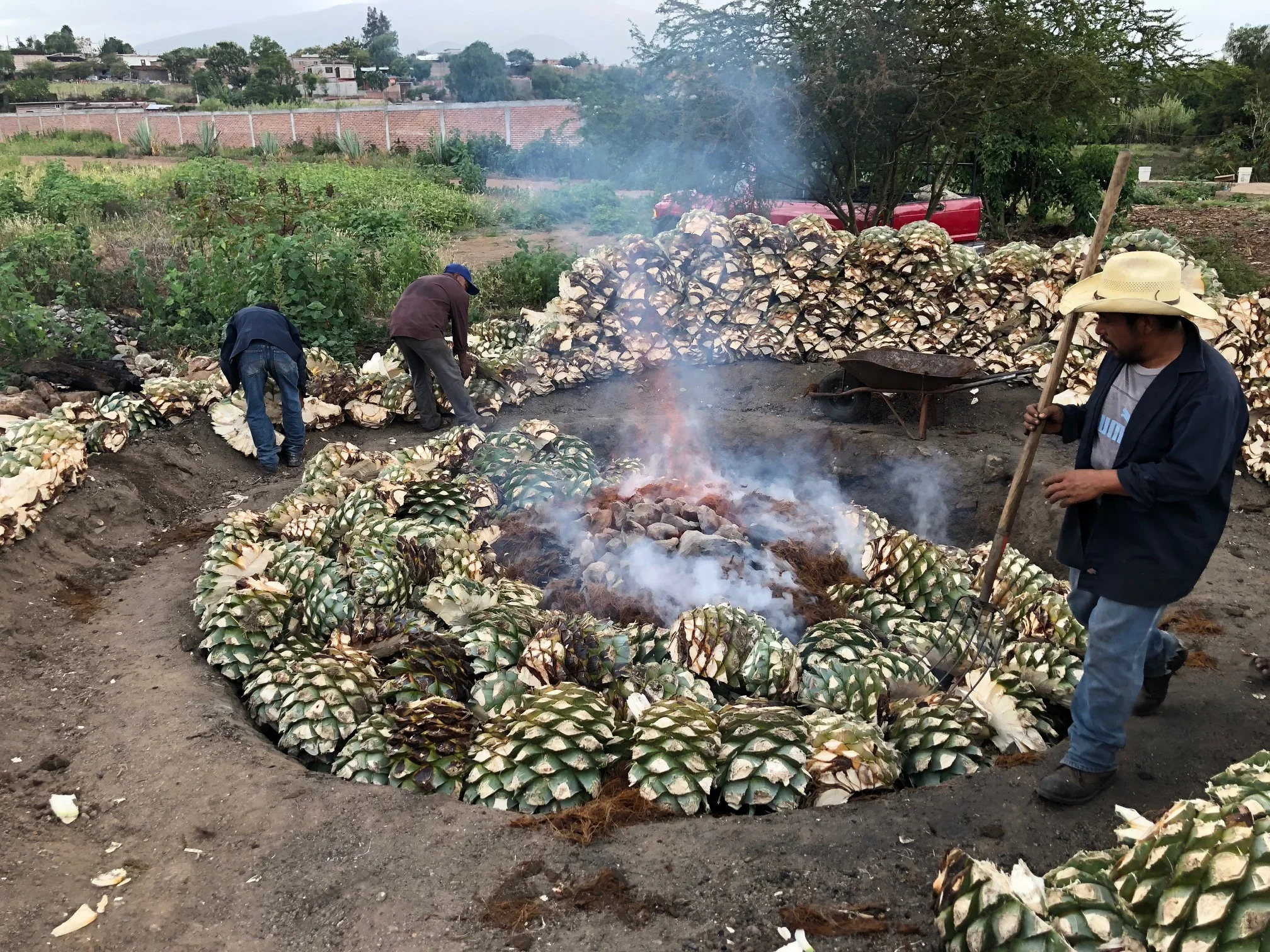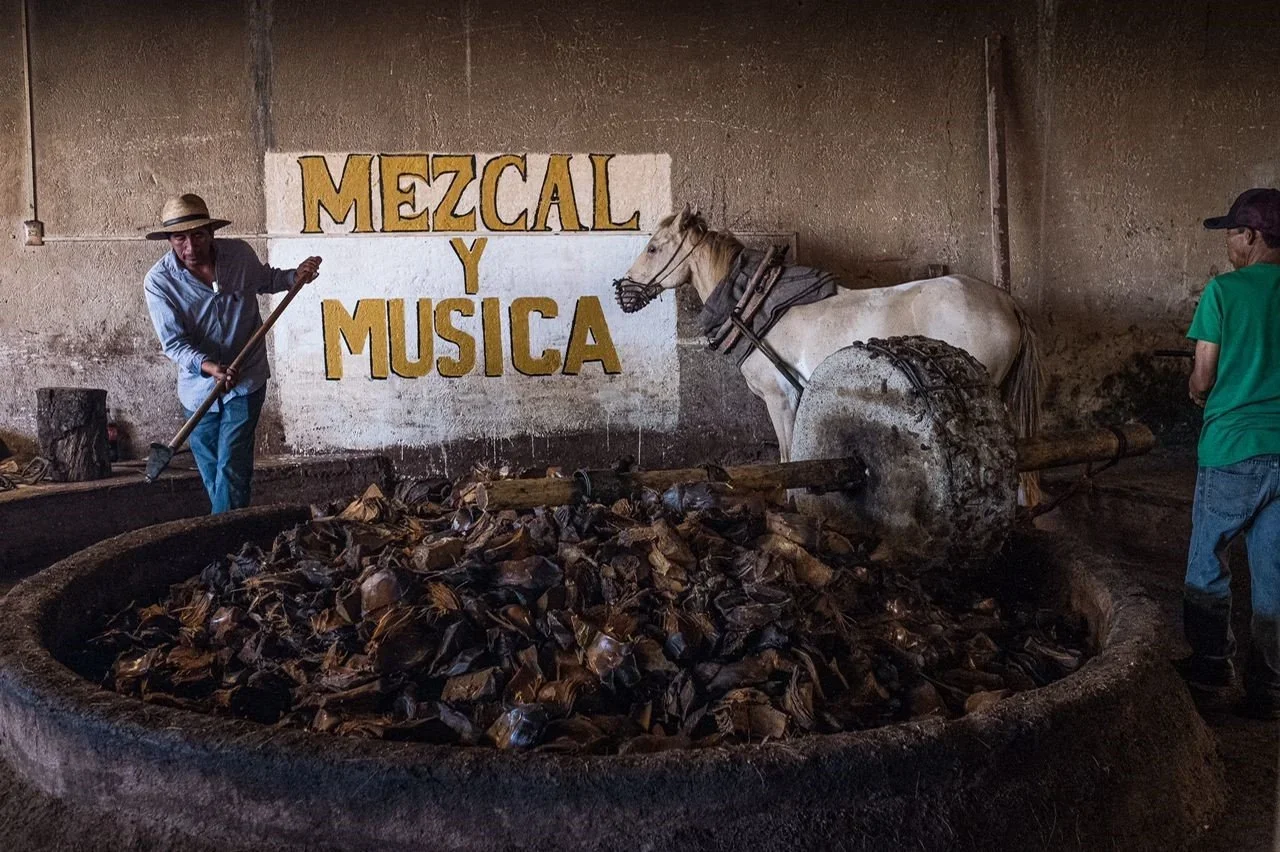HOW IS MEZCAL MADE?
The Soul of Mexican Identity
Mezcal is far more than a spirit; it is an emblem of Mexican identity, tradition, and cultural heritage, particularly in the state of Oaxaca, often called the "World Capital of Mezcal." Its roots are steeped in history and folklore, extending back to pre-Hispanic Mesoamerican civilizations.
How is Mezcal Made? The Artisanal Process
Mezcal production is largely an artisanal craft, passed down through generations of mezcaleros (producers) in small distilleries called palenques or tabernas. The process is meticulous and deeply respects time and tradition, distinguishing it significantly from modern industrial spirits.
Step 1: Harvesting (Jima)
Variety of Agave: Unlike tequila (made only from Blue Weber Agave), mezcal can be made from over 30 types of agave, with Espadín being the most common due to its relatively short maturation time (6–8 years) and high sugar content. Other varieties, like Tepeztate, can take up to 35 years to mature.
The Piña: Farmers (jimadores) use axes and machetes to strip the agave's spiny leaves, revealing the heart of the plant, or piña (named for its pineapple-like shape), which is rich in fermentable sugars.
Step 2: Cooking (Roasting)
The Smoke: This step is what gives most mezcals their signature smoky flavor. The piñas are chopped and roasted in a conical earthen pit oven (horno) lined with volcanic rocks.
Process: A fire is built, and once it dies down, the hot stones are covered with agave fiber (bagazo), then the piñas, and finally covered with earth and mats. The piñas are slow-roasted for several days, converting the starches into fermentable sugars and absorbing the smoky, caramelized flavor.
Step 3: Milling (Crushing)
Extracting the Juice: The cooked and cooled piñas are crushed to extract the sugary juice.
Traditional Methods: The most traditional methods are by hand with wooden mallets or, more commonly, using a large, millstone wheel, called a tahona, pulled by a horse or donkey.
Step 4: Fermentation
Wild Yeast: The crushed agave fiber and juice are placed in open-air vats (usually made of wood, but also stone or clay), where natural, ambient yeasts and microbes endemic to the palenque initiate fermentation.
Natural Process: This fermentation can take one to four weeks and is crucial to the spirit's terroir and final flavor profile. The use of commercial yeasts is rare and often frowned upon.
Step 5: Distillation
Double Distillation: The fermented mash is typically distilled at least twice to achieve the desired purity and strength.
Artisanal Stills: Distillation is done in stills made of copper, clay (olla de barro), or stainless steel. Ancestral Mezcal is defined by requiring clay pot stills and hand/stone milling.
Step 6: Aging (Optional)
Madurado en Vidrio: A traditional method of storing the mezcal in glass bottles for over a year to mellow, often buried underground.
Joven (Blanco): Most mezcal is unaged, or Joven, bottled immediately after distillation.
Aged Varieties: Some are aged in oak barrels:
Reposado: Aged for 2 to 12 months.
Añejo: Aged for 1 to 3 years.







